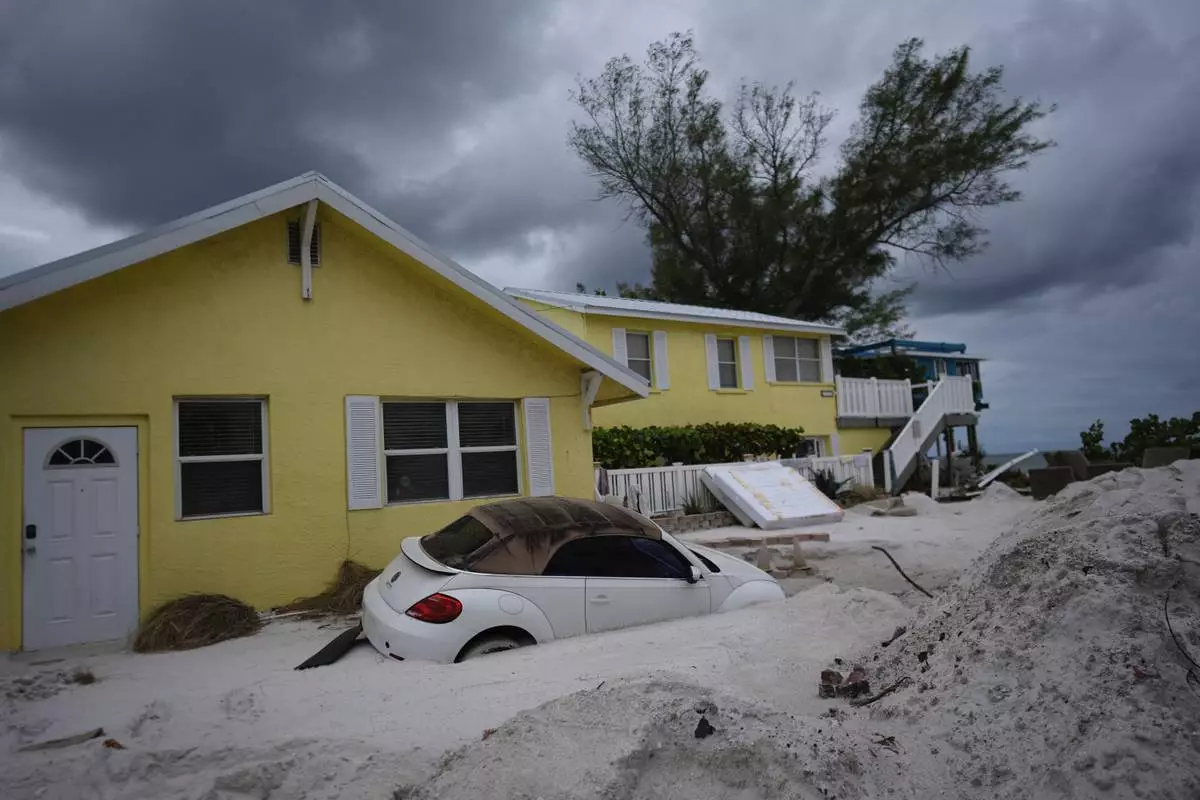Verizon is buying Frontier Communications in a $20 billion deal to strengthen its fiber network.
Verizon Communications Inc. said Thursday that the acquisition will also shore up its foray into artificial intelligence as well as connected smart devices.
Frontier has concentrated heavily on its fiber network capabilities over about four years, investing $4.1 billion upgrading and expanding its fiber network. It now gets more than half of its revenue from fiber products.
The price tag for Frontier, based in Dallas, is sizeable given its 2.2 million fiber subscribers across 25 states. Verizon has approximately 7.4 million Fios connections in nine states and Washington, D.C.
Frontier has 7.2 million fiber locations and has plans to build out an additional 2.8 million fiber locations by the end of 2026.
“The acquisition of Frontier is a strategic fit," Verizon Chairman and CEO Hans Vestberg said in a prepared statement. "It will build on Verizon’s two decades of leadership at the forefront of fiber and is an opportunity to become more competitive in more markets throughout the United States, enhancing our ability to deliver premium offerings to millions more customers across a combined fiber network.”
There are skeptics of the potential for Verizon's $20 billion acquisition, however.
“The real issue is simply that Frontier’s paltry 3.5% national fiber coverage (again, according to the FCC’s broadband map as of end of 2023) would leave Verizon with a combined fiber footprint that still covers less than 13% of the country, with a path to potentially take that only to about 17% of the country,” Craig Moffett of MoffettNathanson Research wrote. “A fiber footprint covering 17% of the U.S. is nowhere near large enough to be the basis of a strategy for a national wireless operator.”
Verizon, based in New York City, will pay $38.50 for each Frontier share. The deal is expected to close in about 18 months. It still needs approval from Frontier shareholders.
Shares of Frontier Communications Parents Inc., which were halted briefly on Wednesday after a report from the Wall Street Journal about the deal sent the stock up nearly 40%, fell 9% Thursday. Verizon's stock dipped slightly.

FILE - A Verizon retail location is shown in Willow Grove, Pa., Thursday, Feb. 22, 2024. Verizon is buying Frontier Communications in a $20 billion deal that helps bolster its fiber network. (AP Photo/Matt Rourke, File)
WASHINGTON (AP) — Congress is allocating more than $100 billion in emergency aid designed to address extensive damage caused by disasters after this week's scramble to find consensus on a government spending bill.
The money comes after back-to-back hurricanes — Helene and Milton — slammed into the southeastern United States this fall, leaving havoc in their wake. But the money would go to much more than just those two storms under the bill signed Saturday by President Joe Biden that keeps the federal government funded through March 14.
The disaster funding looked set to pass earlier this week until President-elect Donald Trump issued new demands that tanked a compromise and threatened a pre-Christmas federal shutdown. A slimmed-down version cleared Congress early Saturday when Republicans abandoned Trump's core request.
Here's a look at what's in the bill for disaster relief and where the money will go:
The Federal Emergency Management Agency's disaster relief fund is essentially the country's checkbook for emergencies. Out of it, the government reimburses states and local governments for things such as removing debris accumulated after hurricanes or overtime costs for firefighters and police who work during disasters.
It also includes money for individual residents, ranging from the $750 payments that disaster survivors can get to $42,500 that some uninsured homeowners can receive to help them rebuild.
Esther Manheimer, mayor of Asheville, the largest city in the North Carolina mountains that was hard hit by Helene, said city officials were pleased to see th additional disaster dollars.
It’s only been four weeks since Asheville residents could drink from and bathe in the water coming out of their faucets. Some businesses in western North Carolina have shuttered permanently or are struggling to survive, and well over 200 roads in the region remain closed.
In a statement earlier in the week, Manheimer emphasized that it was still going to be a long recovery and that "already we see the long-term economic, budgetary and employment impact Helene left in her wake.”
The disaster relief fund was nearly running on fumes after Helene and Milton. FEMA Administrator Deanne Criswell warned during a Senate hearing in November that the fund was down to $5 billion.
The Biden administration had asked Congress for about $40 billion for the relief fund but the bill eventually passed provides a lower amount, $29 billion.
It’s important to keep in mind that this isn’t the only money for the disaster relief fund, said Stan Gimont, a senior adviser for community recovery at Hagerty Consulting. He used to run the community development block grant program at the Department of Housing and Urban Development.
More money can and likely will be designated to the fund later when Congress does a full-year appropriation, he said.
There's also about $21 billion in disaster assistance to help farmers.
North Carolina Agriculture Commissioner Steve Troxler said earlier this week that he was pleased by the agricultural aid but that the state has a lot of specialty crops such as sweet potatoes and Christmas trees that are generally not covered by federal programs. He said he will have to wait and see what specifically ends up being covered.
“We are still evaluating the bill as there are a lot of nuances in it. The devil is in the details," he said.
Other money will go toward rebuilding damaged roads and highways ($8 billion), while more money (about $12 billion) would go toward helping communities recover through HUD grants.
The block grant money is one of the key funds for homeowners who don’t have insurance or enough insurance to recover from disasters.
There’s also $2.2 billion for low-interest loans for businesses, nonprofits and homeowners trying to rebuild after a disaster.
But the money doesn't go just toward local residents.
For example, there's money for the military to address damage from hurricanes and typhoons and for a new hurricane hunter — the planes used to research hurricanes — and funds to help NASA rebuild hurricane-damaged facilities.
No. The money goes to cover more than those two disasters.
Some of the money is specifically earmarked for certain projects such as $1.5 billion designated for assistance after the largest wildfire in New Mexico’s recorded history — the Hermit’s Peak/Calf Canyon fire — and the rebuilding of the Francis Scott Key Bridge in Baltimore.
But a lot of the money also goes more generally toward major disasters that happened in recent years.
The types of disasters covered in the legislation include droughts, wildfires, hurricanes, floods, derechos, and smoke exposure.
Gimont points out that disaster recovery can take a long time so the country is both paying for disasters that happened previously while it prepares for events that will happen in the future.
Take the massive Maui fire, for instance. It decimated the Hawaiian town of Lahaina last year, but Gimont said just the cleanup itself extended into late summer 2024.
Loller reported from Nashville, Tennessee.

FILE- North Carolina Gov. Roy Cooper, right, and Deanne Criswell, Administrator of the U.S. Federal Emergency Management Agency, await the arrival of Democratic presidential nominee Vice President Kamala Harris for a briefing on the damage from Hurricane Helene, at Charlotte Douglas International Airport, in Charlotte, N.C., Oct. 5, 2024. (AP Photo/Chris Carlson, File)

FILE - Michael Vierra looks at his house after it was destroyed by a wildfire, in Lahaina, Hawaii, Sept. 26, 2023. Authorities in Maui strongly encouraged homeowners to wear protective gear provided by nonprofit groups when visiting their properties to protect against asbestos, lead and other toxic remains of the wildfire. (AP Photo/Mengshin Lin, File)

FILE - Homes consumed in wildfires are seen in Lahaina, Maui, Hawaii, Aug. 16, 2023. (AP Photo/Jae C. Hong, File)

FILE - As Hurricane Milton approaches, a car sits half-buried in sand in Bradenton Beach, Fla., in the aftermath of Hurricane Helene, Oct. 8, 2024. (AP Photo/Rebecca Blackwell, File)

FILE - This photo provided by the North Carolina Department of Transportation shows the collapsed eastbound lane of I-40 into the Pigeon River in North Carolina near the Tennessee border, Sept. 28, 2024. (N.C. Department of Transportation via AP, File)

FILE - A man walks near a flooded area near the Swannanoa river, effects from Hurricane Helene , Friday, Sept. 27, 2024, in Asheville, N.C. (AP Photo/Erik Verduzco, File)

FILE - Ben Phillips, left, and his wife Becca Phillips scrape mud out of their living room in the aftermath of Hurricane Helene, in Marshall, N.C., Oct. 1, 2024. (AP Photo/Jeff Roberson, File)

FILE - Damage from Hurricane Helene near Asheville, N.C., is seen during an aerial tour for President Joe Biden, Oct. 2, 2024. (AP Photo/Susan Walsh, File)


















